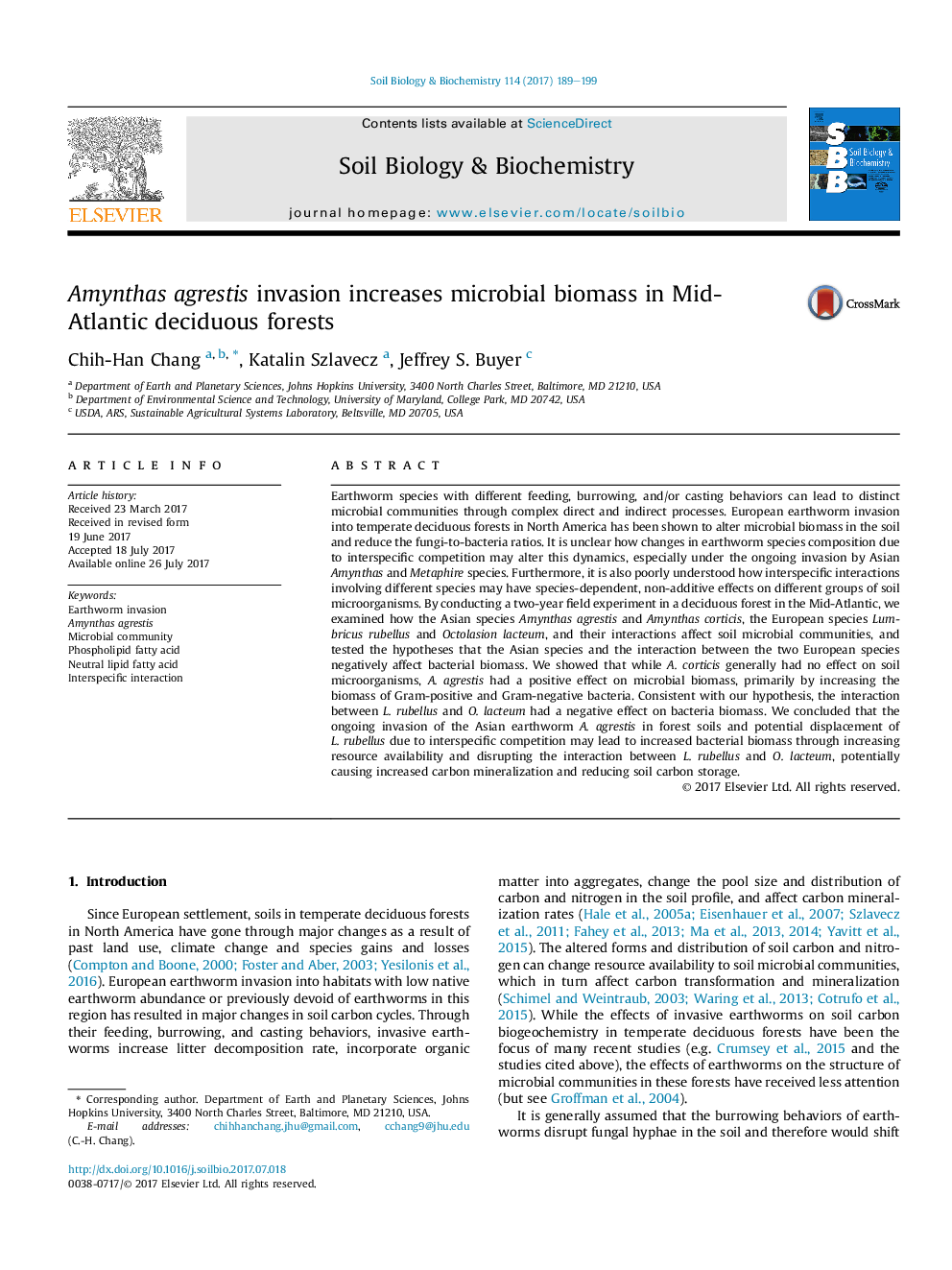| Article ID | Journal | Published Year | Pages | File Type |
|---|---|---|---|---|
| 5516319 | Soil Biology and Biochemistry | 2017 | 11 Pages |
â¢A two-year field experiment was conducted in a Mid-Atlantic deciduous forest.â¢Earthworms had no effect on fungi-to-bacteria ratio.â¢The effects of earthworms on soil microbes are species-specific and non-additive.â¢The Asian earthworm Amynthas agrestis increased bacteria biomass.â¢Asian earthworm invasion can have unexpected consequences on soil carbon dynamics.
Earthworm species with different feeding, burrowing, and/or casting behaviors can lead to distinct microbial communities through complex direct and indirect processes. European earthworm invasion into temperate deciduous forests in North America has been shown to alter microbial biomass in the soil and reduce the fungi-to-bacteria ratios. It is unclear how changes in earthworm species composition due to interspecific competition may alter this dynamics, especially under the ongoing invasion by Asian Amynthas and Metaphire species. Furthermore, it is also poorly understood how interspecific interactions involving different species may have species-dependent, non-additive effects on different groups of soil microorganisms. By conducting a two-year field experiment in a deciduous forest in the Mid-Atlantic, we examined how the Asian species Amynthas agrestis and Amynthas corticis, the European species Lumbricus rubellus and Octolasion lacteum, and their interactions affect soil microbial communities, and tested the hypotheses that the Asian species and the interaction between the two European species negatively affect bacterial biomass. We showed that while A. corticis generally had no effect on soil microorganisms, A. agrestis had a positive effect on microbial biomass, primarily by increasing the biomass of Gram-positive and Gram-negative bacteria. Consistent with our hypothesis, the interaction between L. rubellus and O. lacteum had a negative effect on bacteria biomass. We concluded that the ongoing invasion of the Asian earthworm A. agrestis in forest soils and potential displacement of L. rubellus due to interspecific competition may lead to increased bacterial biomass through increasing resource availability and disrupting the interaction between L. rubellus and O. lacteum, potentially causing increased carbon mineralization and reducing soil carbon storage.
